The Citadel at Mercer, to be played to be played at Five Star Stadium in Macon, Georgia, with kickoff at 4:00 pm ET on September 22, 2018.
The game will be streamed on ESPN+. Frank Malloy will handle play-by-play, while Jason Patterson supplies the analysis and Kristin Banks patrols the sidelines.
The contest can be heard on radio via the various affiliates of The Citadel Sports Network. WQNT-1450 AM [audio link], originating in Charleston, will be the flagship station.
Luke Mauro (the “Voice of the Bulldogs”) calls the action alongside analyst Cal McCombs. The sideline reporter is Jay Harper.
—
The Citadel Sports Network — 2018 radio affiliates
Charleston: WQNT 1450AM/92.1 FM/102.1 FM (Flagship)
Columbia: WQXL 1470AM/100.7FM
Greenville: WLFJ 92.9FM/660AM
Sumter: WDXY 1240AM/105.9FM
—
Links of interest:
– Game preview from The Post and Courier
– Game notes from The Citadel and Mercer
– “Game Day Central” at The Citadel’s website
– Brent Thompson’s 9/18 press conference
– Brent Thompson’s 9/19 radio show (video)
– Bulldogs dodge yet another hurricane
– The game between The Citadel and Charleston Southern has been rescheduled
– Mercer has two of the SoCon’s players of the week
– Boxscore from Mercer-Samford
– Takeaways from Mercer’s victory over Samford
– Redshirt freshman Robert Riddle is now Mercer’s starting quarterback
– Mercer press conference (from 9/17) featuring Bobby Lamb and players Eric Jackson and Tee Mitchell
—
I didn’t get a chance to write a separate review of the Chattanooga game, so I’m going to start by discussing that matchup. At the end of this post, I’ve added my traditionally awful photos from the contest.
First, let’s compare some stats from Game 1 (Wofford) and Game 2 (Chattanooga):
| Category | The Citadel | Wofford |
| Field Position | +11 | -11 |
| Success Rate | 26.1% | 32.0% |
| Explosiveness | 0.719 | 1.745 |
| Finishing drives | 4.67 (3) | 7.0 (2) |
| Turnovers | 0 | 3 |
| Possessions | 12 | 13 |
| Offensive Plays | 66 | 53 |
| Yards/rush | 3.9 | 7.7 |
| Yards/pass attempt | 2.1 | 2.9 |
| Yards/play | 3.6 | 6.9 |
| 3rd down conversions | 2/16 | 4/10 |
| 4th down conversions | 4/6 | 0/0 |
| Red Zone TD% | 66.7 (2/3) | 100.0 (2/2) |
| Net punting | 42.4 | 35.8 |
| Time of possession | 32:38:00 | 27:22:00 |
| TOP/offensive play | 29.67 seconds | 30.98 seconds |
| Penalties | 2/20 yards | 3/45 yards |
| 1st down passing | 0/1 | 3/5, 23 yards |
| 3rd and long passing | 0/5 | 1/1, 3 yards |
| 4th down passing | 1/2, 23 yards | 0/0 |
| 1st down yards/play | 3.75 | 4.75 |
| 3rd down average yards to go | 7.9 | 7.4 |
| Category | The Citadel | Chattanooga |
| Field Position | 11 | -11 |
| Success Rate | 45.3% | 46.9% |
| Explosiveness | 0.727 | 1.65 |
| Finishing drives | 3.5 (6) | 2.8 (5) |
| Turnovers | 2 | 1 |
| Possessions | 9 | 9 |
| Offensive Plays | 75 | 49 |
| Yards/rush | 4.3 | 4.7 |
| Yards/pass attempt | 7.5 | 12.1 |
| Yards/play | 4.7 | 8.8 |
| 3rd down conversions | 10/18 | 4/11 |
| 4th down conversions | 3/4 | 0/1 |
| Red Zone TD% | 66.7 (2/3) | 50.0 (2/4) |
| Net punting | 25.3 | -1.5 |
| Time of possession | 37:07:00 | 22:53:00 |
| TOP/offensive play | 27.84 sec | 25.60 sec |
| Penalties | 7/78 | 8/47 |
| 1st down passing | 2/4 44 yds | 6/12 131 yds |
| 3rd/long passing | 2/2 14 yds 1 sk | 5/6 149 yds 1 int |
|
4th down passing
|
0/0 | 0/1 |
| 1st down yards/play | 5.8 | 7.4 |
| 3rd down average yards to go | 6.5 | 9.2 |
Note: Overtime statistics are not included, and the same is true for Chattanooga’s final three plays of the first half. As I mentioned in the review of the Wofford game, the stats for that contest do not include The Citadel’s last play of the first half.
—
One of the things that might surprise some folks is that The Citadel and Chattanooga had almost the same percentage of successful offensive plays. The Mocs, of course, had a significant edge in “explosive plays”, which was also the case for the Bulldogs against Wofford. The numbers in that category were quite similar for both games.
On the defensive side of the ledger, my primary observation was that all too often, UTC quarterback Nick Tiano had time to admire the late afternoon sky above Charleston before throwing the football. The Bulldogs obviously struggled to cover Bryce Nunnelly, but almost all of the wideout’s big gains came on slow-developing plays.
Tiano was not sacked, despite throwing 28 passes. He was pressured occasionally, as The Citadel was credited with six “hurries”. The Bulldogs also successfully defensed six passes (five breakups and a pick). While each hurry did not automatically result in a pass breakup/interception, the fact there were six of each was not coincidental.
The Citadel’s offense was better versus UTC than it was against Wofford, at least in terms of consistency. The big plays largely were absent, however, aside from Jordan Black’s nifty 25-yard TD toss to Grant Drakeford at the end of the first half. That play was the Bulldogs’ biggest “explosion” play in the first two games, one of only three plays so far in the young season with an IsoPPP number over 2.
All three of those “2+” plays were pass plays. I think that if Jordan Black has the opportunity to throw the ball more often in standard down-and-distance settings, rather than mostly airing it out in passing down situations, The Citadel could see a sizable uptick in explosive plays. One thing I was happy to see against the Mocs was Black throwing the ball on first down, which he did four times. He also passed twice on second-and-short plays.
On The Citadel’s 11 pass plays (ten throws and a sack) versus Chattanooga, the Bulldogs were in obvious passing situations five times, and in standard downs on six occasions. I think that is a solid mix. It is much better than what happened against Wofford, when all 11 of Black’s passes came in actual or de facto passing situations.
—
I appreciate Brent Thompson discussing his fourth-down calls from the Chattanooga game on his radio show. It is interesting to get insight on the coach’s thought process for each of those situations.
Generally, I agreed with his decision-making versus UTC. Some of his calls were very aggressive, particularly going for it on 4th-and-2 from the Bulldogs’ own 30-yard line in the first possession of the third quarter. The fake punt was also a take-no-prisoners play; alas, it got short-circuited by a fumble.
Both of those calls came in or around what I denoted as “Boo Territory” on my 4th-down decision chart, a graphic created for my August essay on creating more big plays. “Boo Territory” is actually a reference to one of The Citadel’s mascots, though it could also serve as what the reaction in the stands might be for a failed attempt in that part of the field. At any rate, I liked the pugnacious nature of the calls.
However, there was a more conservative decision made on The Citadel’s opening possession of the contest. The Bulldogs had already converted a 4th-and-2 on the UTC 38-yard line earlier in the drive. On 4th-and-10 from the Mocs’ 33-yard line, though, Thompson elected to punt. The kick went into the end zone, for a net of only 13 yards.
I wish the Bulldogs had gone for it, even on 4th-and-10. Part of my thinking is that there are usually a very limited number of possessions in The Citadel’s games (against UTC, each team only had nine).
When a drive gets inside the opposing 40, it may be that taking a chance is the way to go, simply because there will be few opportunities to get back in that area over the course of the contest.
Thompson wanted to play field position at the time. He may also have influenced by the third-down play, which gained only 3 yards, and came after a low-blocking penalty put the Bulldogs “behind the chains”.
—
Speaking of that low-block infraction, I was interested (and concerned) by this article in SBNation about the rule changes on blocks below the waist:
College football has seemingly figured out a way to slow down a good triple-option attack: throw flags…Army has gone from averaging 4.2 penalties per game (10th in FBS) to 6.3 this year (63rd), and Georgia Tech has gone from 4.0 (fifth) to 5.0 (22nd).
A tweet embedded in the piece noted that Army “has been called for 7 illegal blocks in [its] first 3 games [after the] Black Knights were whistled for 4 illegal blocks in 13 games last season”.
The Bulldogs have been called for a low block in each of their first two games. The 15-yard penalty assessed for each infraction all but eliminates a possession for a triple option team, as Brent Thompson pointed out on his radio show.
One suspects the powers-that-be in college football would like to see the triple option go the way of the dinosaurs, preferring the more open (and arguably more dangerous) spread offenses currently in vogue.
The rule changes for this season appear particularly specious. As Paul Johnson was quoted as saying:
Either blocking below the waist is dangerous or it’s not. It’s not any more dangerous five yards down the field than it is on the line of scrimmage. If it’s that scary, they ought to not tackle below the waist.
This is an issue that will be watched throughout the season. That includes games played in the Southern Conference.
—
Two quick special teams comments:
- The Bulldogs have to start making field goals.
- Chattanooga averaged a net of -1.5 yards (!) on two punts, but somehow did not allow any points on the subsequent possessions.
—
In August, Mike Capaccio was named The Citadel’s new director of athletics. Last week, he discussed several issues related to his position in a wide-ranging interview with Jeff Hartsell of The Post and Courier. You can read the article here: Link
I wish Capaccio the best of luck, but I have to shake my head at the hiring process.
Capaccio had been serving as The Citadel’s interim AD since mid-July, but says he had not put his hat in the ring for the full-time gig until he was asked to.
“I was encouraged to apply by some people in administration, and it was not something I was anticipating,” he said. “I was happy in the role I was in. It happened very quickly; it was under a three-week deal from when I applied until I was named AD.
“What I was told is that I was the guy who could come in and get this thing going, because I already knew the inner workings of the organization. The Citadel is a different school, and it takes time to get accustomed to it.”
In other words, someone came to Capaccio, said “Hey, you need to apply” — and less than three weeks later he was the AD.
That, after statements like these:
“The challenge is, we truly have an unbelievable candidate pool in front of us,” [search committee chairman Dan] Bornstein said. “It will be very difficult to narrow the field, because we have an extraordinary field, and an extraordinarily diverse field in all aspects.”
Daniel Parker of Parker Executive Search told the committee that the field of 100 interested applicants was unusually large.
“Typically, we have 60 to 70 candidates,” he said. “On this search, we’ve had more than 100 who went through the process of submitting a letter of interest and a resume, providing references and completing a questionnaire.
“We have sitting athletic directors from Divisions I, II and III, deputy ADs, senior associates, senior women’s administrators, with ethnic and gender diversity. They come from backgrounds in compliance, fund-raising and coaching.”
Parker also said there were candidates from all the “Power 5” conferences (the SEC, ACC, Big Ten, Big 12 and Pac 12).
Who are we kidding here?
First of all, why was a search firm hired (for $70,000) before potential internal candidates could be assessed?
Parker Executive Search supposedly rustled up over 100 candidates (including “sitting athletic directors from Divisions I, II, and III”). Despite that, someone (or multiple someones) in an administrative capacity at The Citadel decided, very late in the game, to call an on-campus employee and ask him to apply for the position.
Like I said, I hope Capaccio does a great job for The Citadel. He has a reputation for being an outstanding fundraiser, and the military college certainly needs someone with that skill set as its AD.
You will excuse me for thinking, however, that Parker ought to refund the school at least part of that $70,000 — or if not, explain the real purpose of the search.
—
With the recent postponement (and cancellation, in some cases) of numerous Division I football games due to Hurricane Florence, there has been talk that college football needs to make an adjustment in its annual calendar. Given the number of contests affected by weather problems in recent years, schools are starting to look for ways to make their respective schedules more flexible.
The easiest way to do that is to add a second bye week to the schedule. This is something that has been under discussion in recent years.
It won’t matter next year, because in 2019 there are 14 Saturdays between Labor Day weekend and the Saturday after Thanksgiving (rather than the usual 13). Every FBS team will have two byes next fall.
However, most years there are only 13 such Saturdays, and hence only one bye week.
If a change would be made, the college football season would start (for most teams) the weekend before Labor Day, meaning the schedule would start one week earlier that it does now.
This would have repercussions for FCS schools as well, because it would increase the chances of the subdivision allowing teams to schedule 12 regular-season games on an annual basis, instead of just having the option in seasons with 14 Saturdays (like in 2019).
An earlier start to the FCS regular season could be pushed again if the FBS restructures its regular season. The higher level of Division I has been considering a standardized 14-week format that would require two byes for each FBS team.
Big South commissioner Kyle Kallander, whose conference voted against the permanent 12th game in the FCS, agreed such a change on the FBS level could become a game-changer for the defeated proposal in the subdivision.
“The Big South membership was not unanimous in its opposition to the 12th game proposal,” he said. “However, we voted against it because we prefer that the (NCAA) Football Oversight Committee conclude its study of the football calendar before any further extension of the season. At the conclusion of that study, should there be a move toward a standard 14-week season, our position may change.”
I think a 12-game regular season would be quite beneficial to The Citadel. It would almost certainly mean an additional home game every season for the military college, and with the added revenue that goes along with it.
—
The postponement of The Citadel’s game with Charleston Southern created a bit of scheduling trivia. From The Citadel’s game notes:
The change in the schedule means the Bulldogs will open the season with three straight conference games. That has not happened since the Bulldogs opened the 1926 season with three straight Southern Intercollegiate Athletic Association games.
In 1926, The Citadel started 2-1, losing to Chattanooga but beating Stetson at home and winning…at Mercer.
The 1926 team is better known for beating both Clemson (15-6) and South Carolina (12-9) that season, each away from home (the victory over the Gamecocks came in Orangeburg). The head coach was Carl Prause, and the team was captained by Ephriam “Ephie” Seabrook, a two-time All-State guard for the Bulldogs.
Seabrook would later coach the South Carolina team in the Shrine Bowl (in 1941). He is also remembered for driving Tom Howie (the future “Major of St. Lo”) from a Rhodes Scholar candidate interview in Columbia to Charleston in 1928, arriving just before kickoff of a game versus Clemson. (Led by the irrepressible Howie, the Bulldogs beat the Tigers 12-7.)
—
It is hard to put much stock in Mercer’s team statistics after three games, partly because the Bears have only played one competitive game. MU opened the season with a 66-14 loss to a very good Memphis team, then followed that up with a 45-3 pasting of Jacksonville, a Pioneer League squad.
Last week, Mercer opened its SoCon campaign with a 30-24 victory at Samford, an eye-opener for a lot of people (though maybe not such a big surprise to veteran observers).
The game was fairly evenly played on the stat sheet, but the Bears dominated time of possession (35:27), consistently converting on third down (7 for 13). Mercer held a 17-7 lead at halftime and never relinquished it.
—
Robert Riddle (6’3″, 207 lbs.), a redshirt freshman from Lookout Mountain, Tennessee, is the new starting quarterback for the Bears. The game against Samford was Riddle’s first as the full-time starter, as he has won the job over last year’s QB, Kaelan Riley.
Riddle had a fine game versus the Birmingham Bulldogs, completing 23 of 34 passes for 316 yards, with one TD and one interception. For that effort he was named the SoCon’s offensive player of the week. He is apparently no relation to former Elon quarterback/pugilist Scott Riddle.
Senior running back Tee Mitchell (5’10”, 204 lbs.) rushed for 103 yards against Samford. Mitchell, a second-team preseason All-SoCon selection who led the Bears in rushing last season, scored two touchdowns against The Citadel in last year’s contest between the two teams. He went to high school at The Bolles School in Jacksonville before spending a year at the Air Force Academy prep school.
Nine different Mercer players caught passes in last week’s game. Marquise Irvin (6’3″, 216 lbs.), a preseason first-team all-league pick, led the Bears in receptions with six. The native of Huntsville had three catches versus the Bulldogs last season. He also serves as Mercer’s punt returner.
Sam Walker (6’4″, 242 lbs.) was the preseason first-team all-conference tight end in the SoCon. He is a redshirt senior from Cumming, Georgia.
Although listed as a backup, converted defensive back Stephen Houzah (5’9″, 161 lbs.) showed his potential as a wide receiver against Samford, catching a 73-yard TD pass in the fourth quarter.
Samford’s projected starters on the offensive line average 6’4″, 293 lbs, though that is including a 255 lb. right tackle (Dawson Ellis). Listed weights for the other four positions on the o-line: 287, 297, 305, 319.
The left tackle spot is manned by 6’3″, 287 lb. redshirt junior Austin Sanders, a preseason first-team all-SoCon selection. Sanders, from Stone Mountain, Georgia, began his collegiate career at Mississippi Valley State.
—
Mercer generally employs a 3-4 defense, though as must always be noted, teams often line up differently when facing a triple option opponent.
The Bears had three preseason all-conference picks on D, one for each level of the defense. One of them, redshirt senior outside linebacker LeMarkus Bailey (5’11”, 199 lbs.), was a first-team selection.
On the defensive line, Mercer features second-team all-SoCon preseason choice Isaiah Buehler (6’3″, 259 lbs.) and 6’0″, 288 lb. noseguard/bowling ball Dorian Kithcart. They are a tough duo; Kithcart in particular had an outstanding game versus The Citadel last season.
The third man on the d-line is seriously large 6’5″, 297 lb. defensive end Destin Guillen. The Greenville resident, like Kithcart a redshirt junior, is one of three South Carolinians on the Mercer roster.
Eric Jackson (5’8″, 172 lbs.), Mercer’s starting strong safety, was a preseason all-league pick. Jackson had seven tackles against the Bulldogs in last year’s contest.
Starting cornerback Harrison Poole (5’11”, 196 lbs.) had an interception last week versus Samford, and also had a pick against The Citadel last season.
—
Placekicker Cole Fisher (6’2″, 188 lbs.) was last week’s special teams player of the week in the SoCon. He made 3 of 4 field goal tries against Samford. Fisher also handles kickoffs for the Bears.
Matt Shiel (5’11”, 209 lbs.) is Mercer’s starting punter. Shiel is a native of Doncaster, Australia.
Shiel has one of the more unusual college backgrounds in Division I football, as he played his freshman year of football at Auburn before transferring to Mercer for the 2015 season. He subsequently went back to school in Australia for two years before transferring back to MU this year. Yes, he has actually transferred to Mercer twice.
Starting wide receiver David Durden (6’2″”, 197 lbs.), a freshman from Midville, Georgia, is listed as the primary kickoff returner for MU, while Steven Nixon (5’11”, 221 lbs.) returns as the long snapper.
—
Odds and ends:
– The weather forecast for Saturday in Macon, per the National Weather Service: mostly sunny, with a high of 92 degrees. The projected low on Saturday night is about 69 degrees.
– Per one source that deals in such matters, Mercer is a 7 1/2 point favorite over The Citadel, with an over/under of 48 1/2.
– Other lines involving SoCon teams: Furman is a 17-point favorite at East Tennessee State; Western Carolina is a 24-point favorite over VMI; and Samford is a 3 1/2 point favorite at Chattanooga.
Wofford is off this week.
– Also of note: Elon is a 13-point favorite at Charleston Southern, and Alabama is a 25 1/2 point favorite over Texas A&M. The Citadel’s opponent next week, Towson, has a bye this week.
– Massey Ratings: The Citadel is ranked 67th in FCS. Mercer is ranked 28th (a 14-spot jump from last week).
Massey projects the Bulldogs to have an 24% chance of winning, with a predicted final score of Mercer 29, The Citadel 19.
Other FCS rankings of note in Massey: Towson (19th, a leap of 19 spots from last week), Elon (21st), Colgate (25th), Kennesaw State (27th), Wofford (31st), Samford (37th), Furman (38th), Yale (39th), Chattanooga (40th), Western Carolina (52nd), Charleston Southern (63rd), UT Martin (68th), East Tennessee State (86th), Gardner-Webb (95th), Tennessee Tech (96th), South Carolina State (97th), Presbyterian (102nd), VMI (116th), Davidson (124th), Mississippi Valley State (125th and last).
Massey’s top 5 FCS squads: North Dakota State, James Madison, South Dakota State, Weber State, and Eastern Washington.
Massey’s top ten FBS teams (in order): Alabama, Georgia, Oklahoma, Ohio State, Clemson, Penn State, LSU, Auburn, Oklahoma State, and Washington. Mississippi State is 11th, Notre Dame 12th, Virginia Tech 14th, North Carolina State 18th, Duke 20th, Boston College 21st, South Carolina 29th, Wake Forest 38th, Vanderbilt 46th, Memphis 52nd, Appalachian State 56th, Florida State 59th, Army 64th, Navy 65th, Toledo 73rd, North Texas 74th, Tennessee 75th, Air Force 78th, Wyoming 80th, North Carolina 88th, Georgia Southern 108th, Coastal Carolina 110th, Charlotte 125th, Liberty 126th, Old Dominion 128th, and UTEP 130th and last.
– Among Mercer’s notable alumni: music promoter Phil Walden, NBA player/coach Sam Mitchell, and publisher/executive Reg Murphy.
– Mercer’s roster includes 62 players from Georgia. Other states represented on its squad: Florida (12), Alabama (5), Tennessee (4), South Carolina (3), North Carolina (2), and Texas (1).
Mercer has one of the least geographically diverse rosters in the SoCon, though not included in the above breakdown is punter Matt Shiel, who as noted earlier is from Australia.
The three Palmetto State players on Mercer’s squad are the aforementioned Destin Guillen (a product of Berea High School), redshirt freshman quarterback Brett Burnett (who attended Airport High School), and freshman offensive lineman Tyrese Cohen (from Midland Valley High School).
However, Mercer once again has no players from legendary gridiron factory Orangeburg-Wilkinson High School, a circumstance which in the long run will result in a painfully low ceiling for the Bears’ aspirations as a program. As has been said many times, ignoring the famed Maroon and Orange is a perilous maneuver.
– The Citadel’s geographic roster breakdown (per the school’s website) is as follows: South Carolina (47), Georgia (28), Florida (9), North Carolina (5), Texas (5), Tennessee (4), Pennsylvania (3), Alabama (2), New York (2), and one each from Kentucky, Nebraska, New Jersey, Oklahoma, and West Virginia.
– This week’s two-deep is similar to the one released for the Chattanooga game. Mason Kinsey makes an appearance on the depth chart as one of the Bulldogs’ defensive tackles. Also, Rod Johnson is listed as the primary kick returner.
– The Citadel has a 3-5-1 record on games played on September 22, including a 2-1 mark in SoCon play. The three wins:
- 1962: 19-0 over Davidson, in a game played at Johnson Hagood Stadium. Dwight Street caught a touchdown pass from Wade St. John, and the halfback also added two field goals. Sid Mitchell had the other TD for the Bulldogs, with his score following a drive set up by a Joe Cannarella fumble recovery.
- 1979: 27-14 over Vanderbilt at Dudley Field in Nashville. Tim Russell was 7 for 12 passing for 111 yards and a TD (caught by Byron Walker), and also added 74 yards on the ground. Meanwhile, both Stump Mitchell and Danny Miller rushed for over 100 yards, with Mitchell scoring once and Miller twice. The Bulldogs rolled up 499 yards of total offense.
- 1990: 21-10 over Marshall before 17,105 fans at Johnson Hagood Stadium. Everette Sands rushed for 135 yards and a touchdown, while Jack Douglas accounted for The Citadel’s other two TDs. Lester Smith, J.J. Davis, and Shannon Walker all had interceptions, as the Bulldogs’ defense forced six turnovers.
– The Citadel has victories over Mercer in four different cities: Charleston, Macon, Savannah, and Augusta. The Bulldogs are 3-0 in Macon, with wins in 1926, 2014, and 2016.
– Saturday is Family Weekend at Mercer. I suspect there will be a lot of people on campus, with many of the visitors (but not all) attending the game. The parking lots open at 9 am.
—
It is hard to judge how The Citadel will fare this week, mainly because of the unexpected break in the season. While the Bulldogs are 0-2 so far, there are positives that can be taken from their play to go along with some obvious negatives. However, now The Citadel has to essentially re-launch its season.
Can the Bulldogs establish some momentum? Will they avoid falling behind early in the game?
Mercer is coming off what might be its most impressive victory in conference play since Bobby Lamb restarted the program, and will be at home. There is an element of the unknown about the Bears as well, however.
How will Mercer react to a big win and subsequently being a solid favorite the following week? Also, I have this nagging question running through my head — just how good is Samford, really? Do we know for sure?
I guess we’ll find out some of the answers to those questions, and more, on Saturday.
—
Here are the really lousy pictures from the Chattanooga game. They are not annotated, although the game shots are in order; as usual, there are more photos from the first half than the second, for a variety of reasons (but mostly operator error).
Filed under: Football, The Citadel | Tagged: Bobby Lamb, Brent Thompson, Chattanooga, Ephie Seabrook, Grant Drakeford, Jordan Black, Matt Shiel, Mercer, Mike Capaccio, Nick Tiano, SoCon, The Citadel, Wofford |









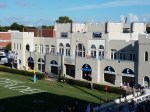

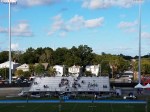

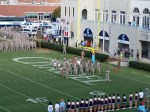

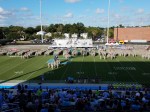

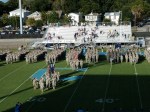

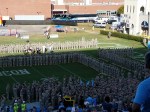


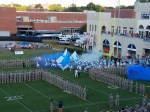


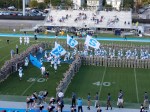





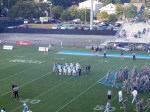
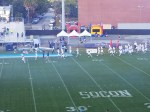





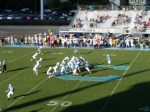


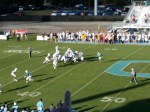


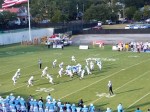


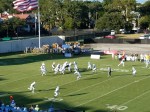




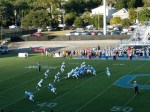



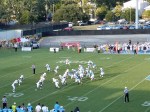



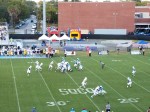



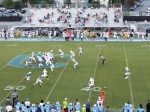



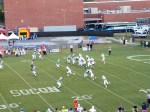


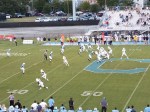






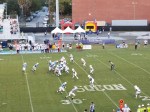













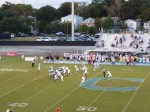





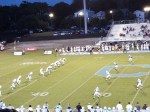


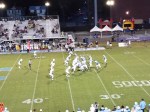



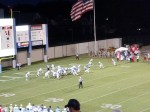



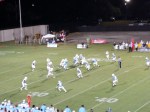



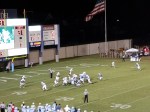











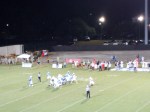

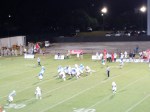
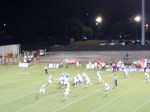






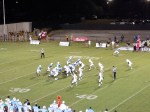

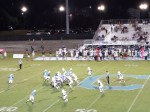

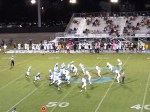


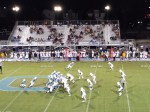


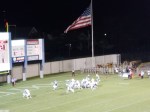

Leave a comment